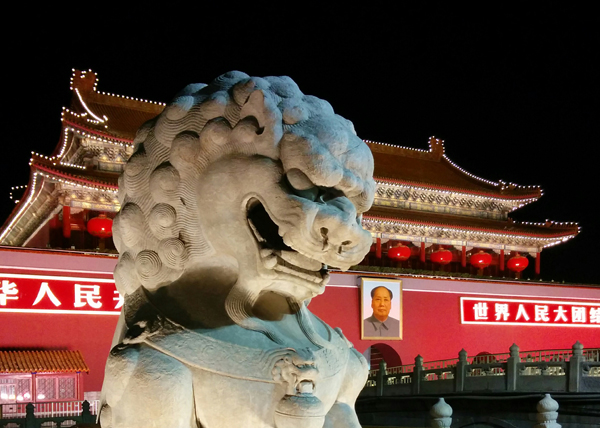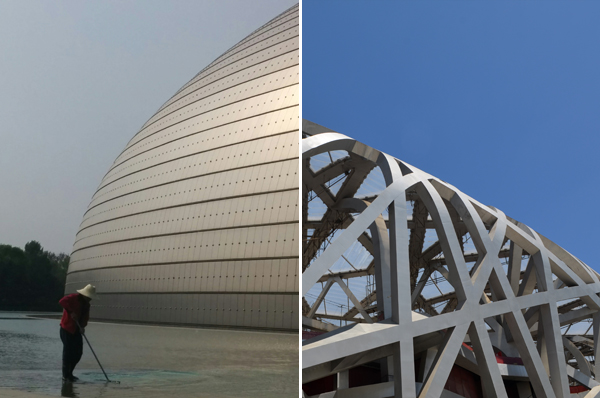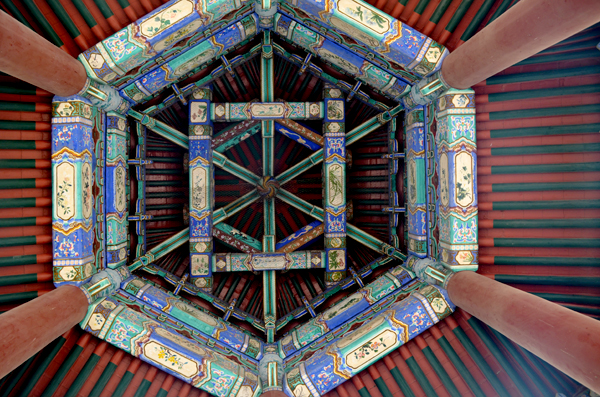
04-05.2016
Beijing’s original radial design has evolved under the influence of the different socioeconomic and political scaffoldings. The center shifted to its current location during the Mongol rule of the Yuan Dynasty. Each subsequent empire has re-shaped or rebuilt major projects to suit their legitimizing narrative. Whether the contemporary history of China is understood as a further dynastic cycle or a rupture towards historical linearity[1], the basic organization of the city center of Beijing is structurally similar to previous periods. This centralized planning has been used largely as the framework for the impressively rapid growth since the declaration of the People’s Republic of China in 1949.
Above | Tiananmen Gate

National Center for the Performing Arts by Paul Andreu | Olympic Stadium by Herzog & deMeuron

Roof structure of a pavilion at the Temple of Heaven complex
1. Starr, John Bryan. Understanding China: A Guide to China’s Economy, History, and Political Culture.
“Because restoration occurred with such unvarying regularity, one might have expected it to occur once again when the authority of the Qing dynasty began to wane in the mid-nineteenth century. How do we explain the fact that the Qing was replaced, when it finally collapsed in 1911, not with another dynastic cycle but with a long, intensely painful period of linear change, a period that has yet to draw to a close?”
An interesting question is raised here, as clearly there has been a rupture with imperialism, in parallel with a yearning for the absolute radiating power system over the relativism of the republic. However, the imperialistic architecture remains.